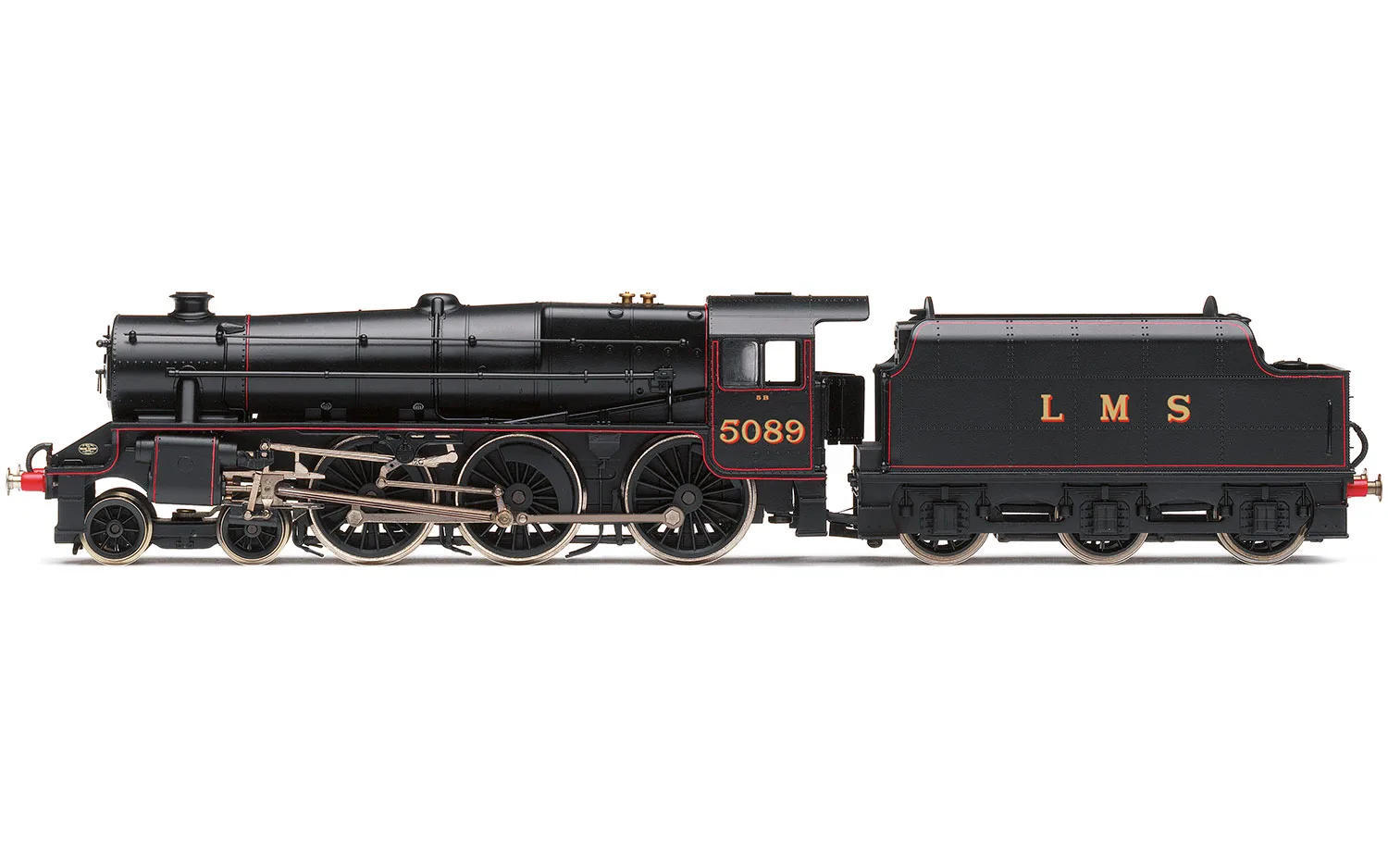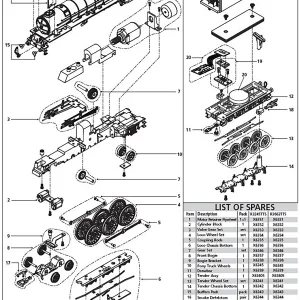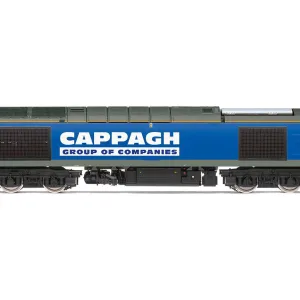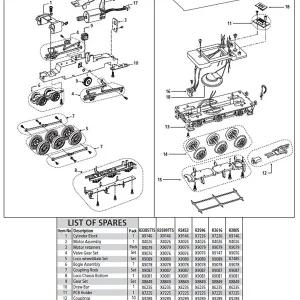LMS, Class 5MT, 4-6-0, 5089 – Era 3
If ever a locomotive deserves the description of ‘ubiquitous’ it the London, Midland and Scottish Railway’s mixed traffic, medium powered Class 5 locomotives which were designed by Sir William Stanier and universally referred to as “Black Fives’.
Stanier, who had previously been the Works Manager at the GWR Works at Swindon, realized that there was a need for larger locomotives with greater pulling power on the LMS and, using his experience gained at Swindon, took inspiration from the GWR Hall Class locomotives. Initially twenty were ordered from the Crewe Works and a further eighty from the Vulcan Foundry with the numbering starting from 5000. The first locomotive to be completed was actually engine No.5020 in 1934 which was built at the Vulcan Foundry whilst locomotive No.5000, the first Crewe built example, did not emerge until 1935.
Construction was carried out at a variety of locations in time; Crewe, Horwich, and Derby works all built numbers of the class and outside contractors, Armstrong Whitworth and the Vulcan Foundry also built considerable numbers. Armstrong Whitworth constructed no less than 327 of them, a huge number for an outside contractor and the firm landed the largest single locomotive order ever given by a British railway company to an outside contractor, when the LMS ordered a block of 227 ‘Black Fives’ from them in 1936. The original examples were built without a dome, with straight throatplace boilers and a low degree superheat but wartime restrictions halted the construction of the Class, with No.5471 being the last produced for five years.
In April 1943 production recommenced with the workshops at Derby, Crewe and Horwich producing batches every year until 1951, these post war examples being built with George Ivatt’s forward top feed type boilers. There were a number of additional detail variations in the locomotives during and after manufacture with modifications introduced in 1948 by George Ivatt, which included changes to bearings and the introduction of Caprotti valve gear. A total of 842 Class 5 locomotives were built between 1934 and 1952, of which only five were named, all after Scottish regiments. The class were probably the most widely used steam locomotive to operate in the United Kingdom, operating the S&DJR route from Bath to Bournemouth, the route from Bristol to Birmingham, routes across the LMS region, out along the old Highland Railway’s Scottish west coast routes and right up to the tip of Scotland, to Wick & Thurso, on the former Great North of Scotland lines.
Their ability to handle an enormous variety of duties with consummate ease made them popular not only with the traffic departments, but also with the crews who worked on them and it was fitting that, on August 4, 1968, ‘Black Five’ No.45212 headed up the last steam hauled timetabled passenger train on British Railways. Built as 5089 at the Vulcan Foundry in April 1935, the locomotive entered traffic on April 14th, allocated to Crewe Shed followed six months later by a move to Sheffield.
Like the majority of the ‘Black Five’ class, 5089 served across the LMS region, but prior to nationalization it spent much of its time in Yorkshire and Cheshire, being renumbered under British Railways to 45089 in October 1948 whilst at Crewe North.





